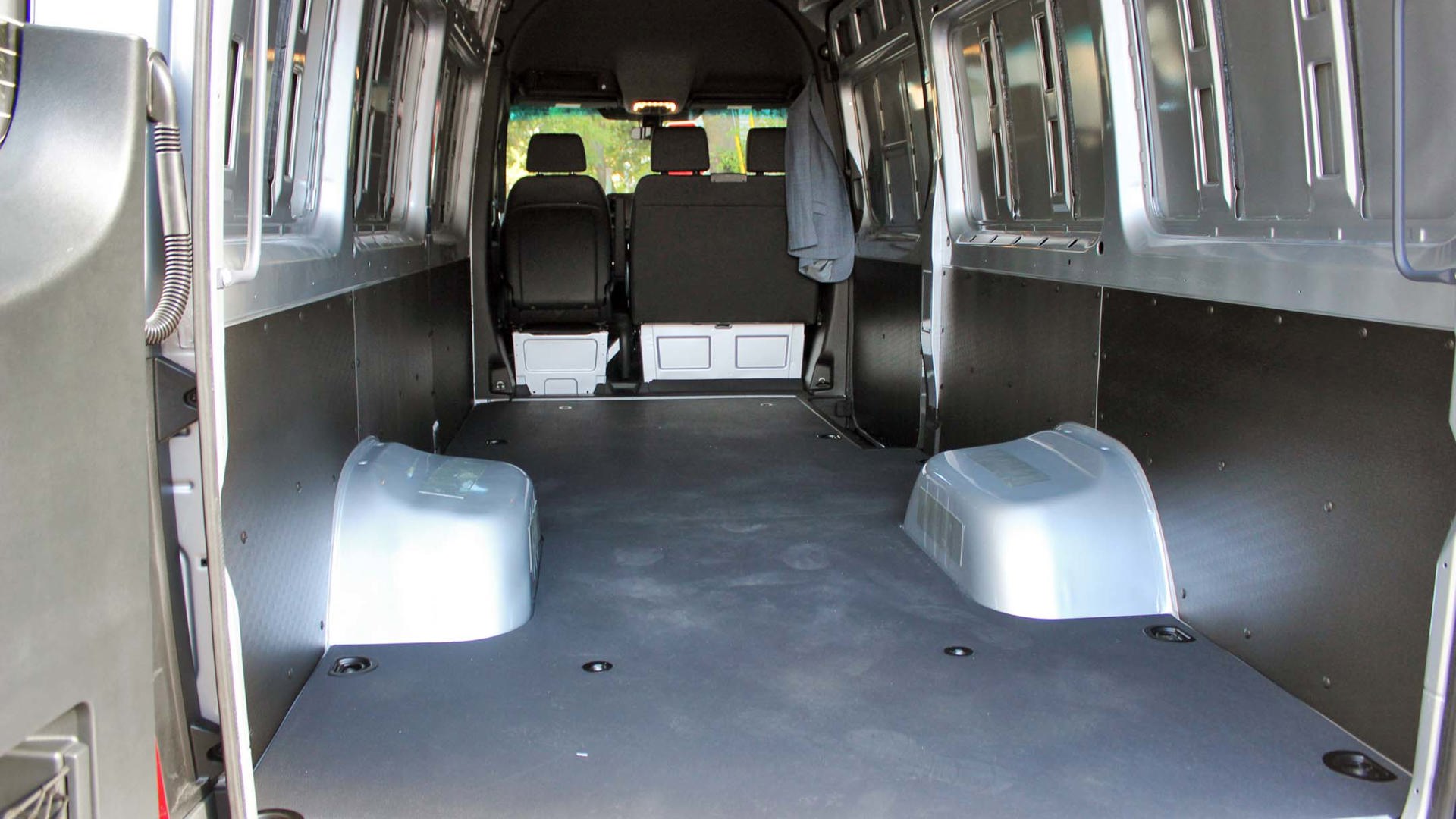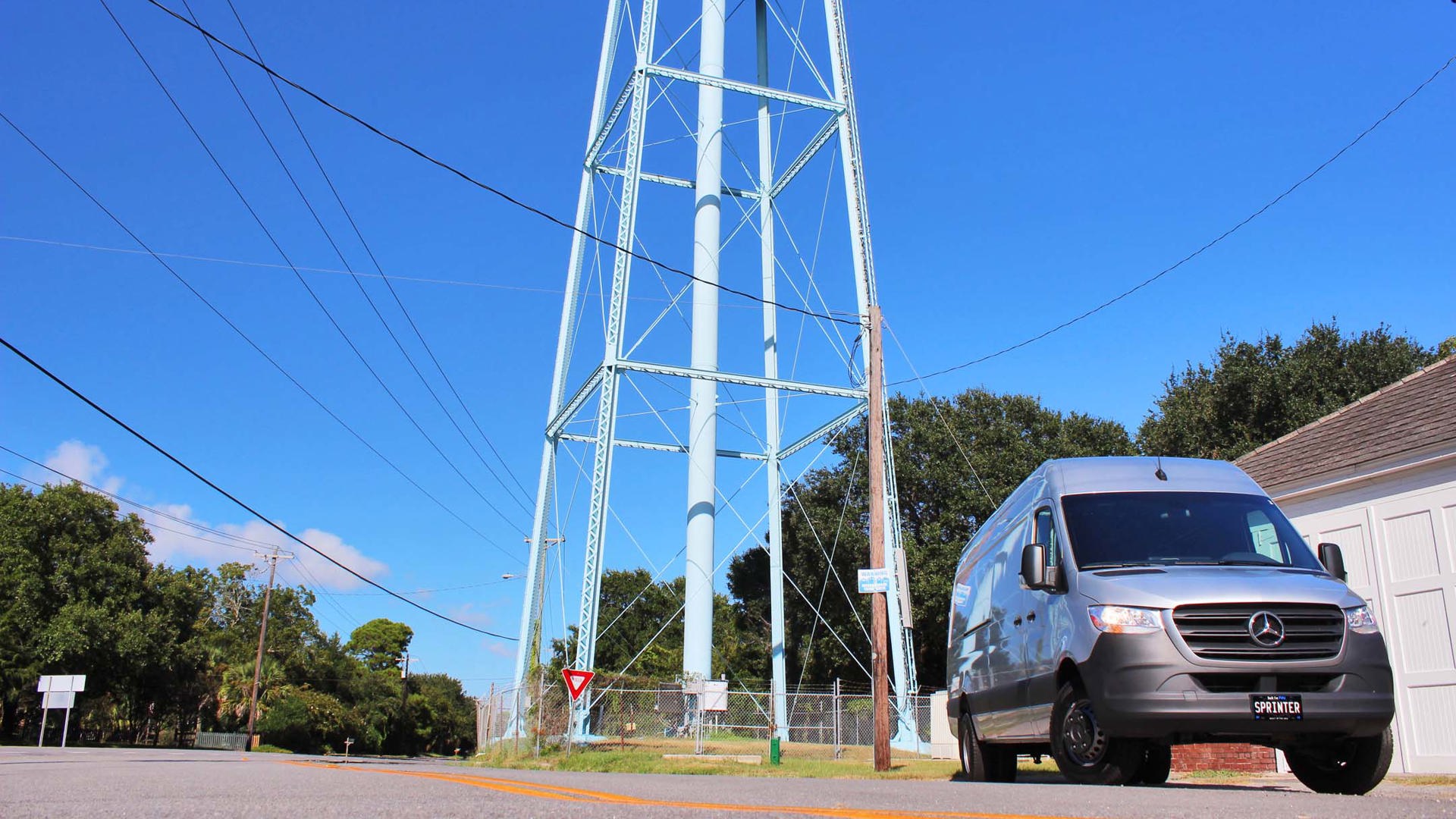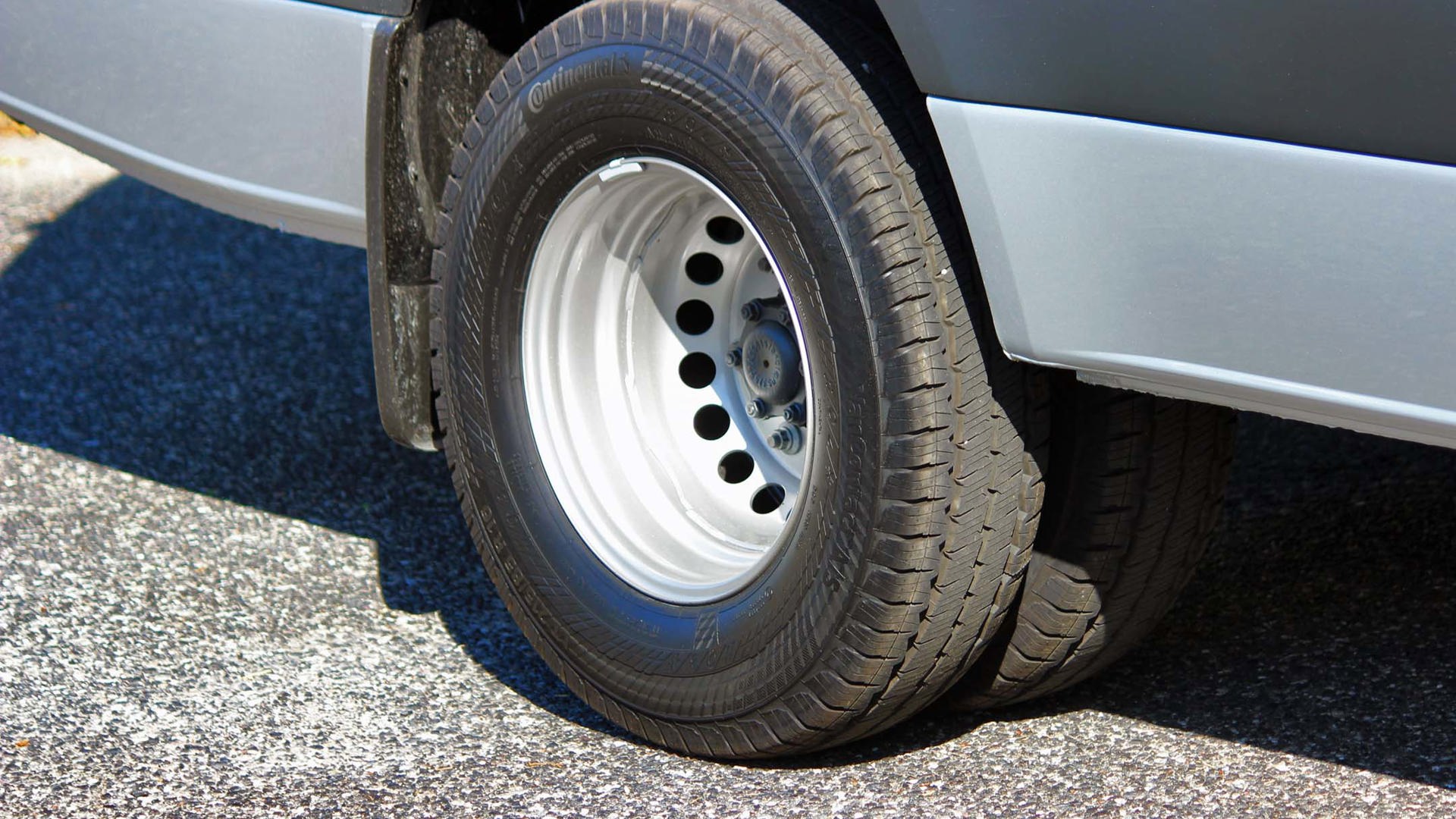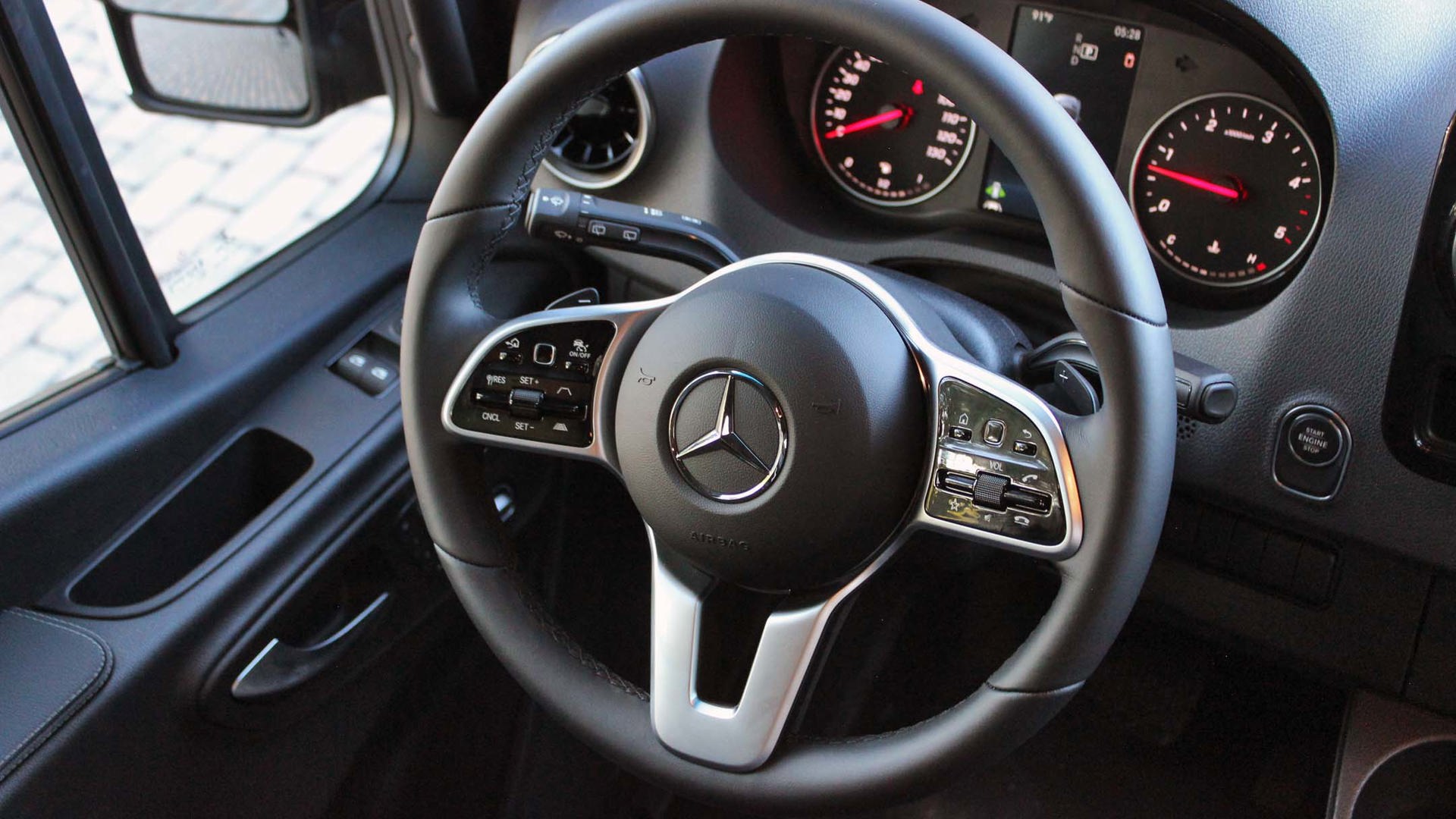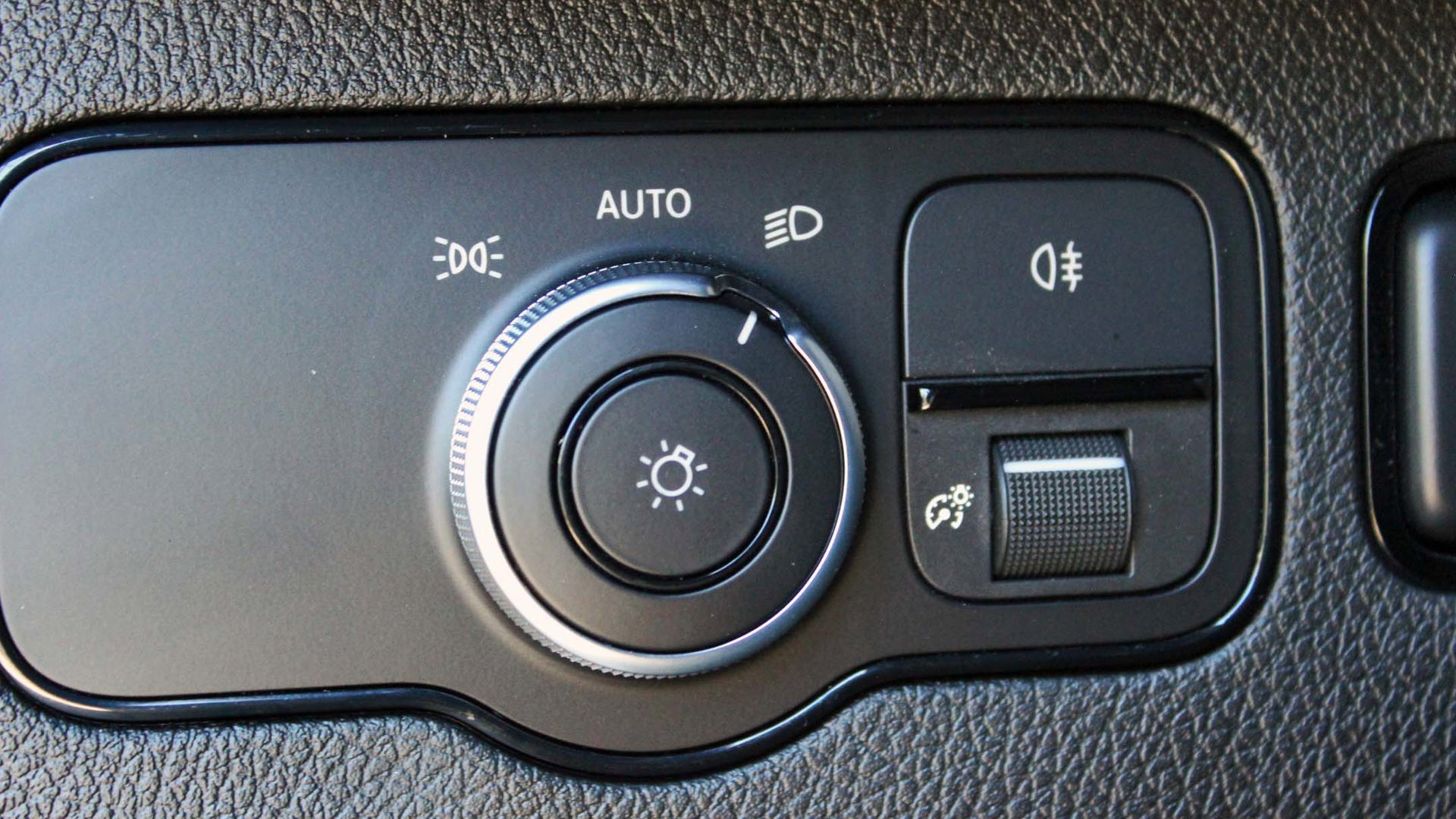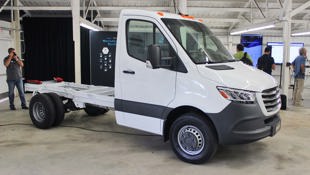CHARLESTON, SC – For the first time since 2006, the Mercedes-Benz Sprinter will be fully built on American soil. Until now, the North American version of the van was being fully built in either Dusseldorf or Ludwigsfelde, Germany – then disassembled in Germany, shipped to the US, and re-assembled in the brand’s Charleston, SC, re-assembly plant. It was all done to avoid the infamous Chicken Tax on light European trucks and vans, originally introduced by the US when various European countries increased tariffs on US chicken. Needless to say, it wasn’t the most efficient – or inexpensive – way to build a van, especially when you’re building 40,000-plus of them every year.
While I’d hesitate to call a full-sized van “brisk”, you won’t be nervous when entering the highway.
Now, after a US$500 million expansion to 1.5 million square feet, a total of 900 (soon to be 1,300) employees up from 400, and state-of-the art manufacturing, painting and assembly tools, Mercedes’ Charleston facility can construct the all-new 2019 Mercedes-Benz Sprinter almost from scratch, with the powertrain still coming from Germany. They’re going to need all that manpower after Amazon announced at the launch that they’d be ordering 20,000 vans for their fleet – up from an original order of 5,000. Mercedes says that with the increased capacity they’ll be able to fulfill the order by the end of 2019, even though that Amazon order alone is equal to almost half of the entire ’18 North American production run.
The launch of the 2019 Sprinter also sees the launch of an all-new 1500 model: It starts at $42,900 and although it will be powered by a new 190 hp, 258 lb-ft four-cylinder gas motor, its 4,105 kg max gross vehicle weight rating (GVWR) is the same as last year’s diesel-powered 2500 model. For its part, the 2500 returns this year with the turbo four as standard and a 190 hp, 324 lb-ft V6 diesel as an option. All V6 models receive either a 2,268 or 3,402 kilo tow capacity, depending on spec.
The four-cylinder is available only with a nine-speed auto, the V6 a seven-speed which are both new to the Sprinter this year. 2500 and 3500 models get RWD or AWD, while the 1500 and 4500 are RWD only. AWD, meanwhile, can only be had with the diesel engine. Going forward, there could be a diesel four-cylinder coming, too – Mercedes has even looked at the possibility of EV power for some of the bigger fleets. While they’re confident it would do in Europe, they aren’t sure how feasible it is in North America for the time being.
Also available in 2019 is the arrival of a 15-person passenger van previously only available in Europe. It joins the standard cargo van, crew van, and chassis cab versions. All Sprinter versions are available with either a 3,668 mm or 4,318 mm wheelbase, while the 3500 and new 4500 versions get an extended option that adds an additional 406 mm overall. The two available roof heights – standard and high – return for 2019, though the 3500 is separated into 3500 and 3500XD models (GVWR 4,491 kg and 5,003 kg, respectively), and the standard 3500 only gets the higher roof.
The 4500, meanwhile, comes standard with dual rear wheels (DRW) and a 5,500 kg GVWR. The 3500 gets a DRW option as well as a “super single” rear axle – instead of four rears, there’s the option for two heavy-duty ones. This makes for less intrusion of the wheel well into the rear cargo area, as well as easier maintenance. According to Mercedes, a number of tire makers offer the heavier-duty tires required for the Super Single rear axle.
When half your vehicle is essentially a big sheet of metal with maybe a few cuts for windows, there’s not a whole lot you can do for styling. Nevertheless, Mercedes has taken steps to differentiate this latest Sprinter from last year’s offerings. The shape of the headlights and grille is more in keeping with the rest of the Mercedes lineup, while new body-coloured bumpers and available chrome grille inserts class things up a bit. This is more important for passenger vans than it is for work vans, so you can go ahead stay with plastic for the bumpers and grille, if that’s what you prefer.
Inside, while the dash is crafted mainly from hard, easy-to-clean plastic, ’19 sees the addition of Mercedes’ new MBUX infotainment system as standard. You can select from either a 7- or 10-inch touchscreen display but either way the graphics are nice and crisp, and the touchscreen responsive. MBUX also offers “Hey, Mercedes” voice commands, though it doesn’t work for climate control here as it does in other Mercedes products. It’s nice to have, to be sure, but we found it a little over-sensitive in that it would activate seemingly without any prompting whatsoever. Weird, and likely fixable with a software update.
The display is also where van-specific apps such as Mercedes PRO Connect and PRO Cloud can be found. Designed to help fleet managers track their vehicles, fuel levels and AdBlue levels are tracked here, as is tire pressure, how far the vehicle has travelled, and so on. It won’t be available in Canada until the 2020 model year, but it can be retrofitted to 2019 models as US trucks will be getting it as standard for ’19. Mercedes hasn’t yet revealed what an eventual retrofit would cost, or how any data plans are going to work.
In terms of driver and passenger comfort, the seats are available in three different materials, including synthetic leather, and for the first time, we’re seeing optional memory power seating with profiles for up to eight drivers. While they are well-cushioned, many will have to extend the bottom cushion for better thigh support, as I did. Luckily, this can be done by simply tugging on a lever mounted on the seat’s leading edge. Lumbar support’s a little on the firm side even in its softest setting, however. Other than that, the driver seating position provides an excellent view through the big front window, while the two-piece side windows pretty much have you covered from all angles.
Of course, rear visibility in a van like this will always be a bit challenging, but Mercedes has tried to offset the big proportions – especially in extended trucks – by providing a standard back-up camera with an optional 360-degree view on the 10-inch screen. In addition to that, rear cross-traffic alert with auto emergency braking is also offered. Other safety aids include active lane-keep assist, forward emergency braking and attention assist; if the computers sense you’re wavering due to fatigue, they’ll tell you to pull over for a rest.
As far as storage goes, you’ll find a locking compartment right above the driver, a shelf above the front passenger, a closing bin atop the dash, storage bin in front of the passenger, and four cupholders at the base of the dash. Of course, that’s before any of the up-fitters get their hands on these and start crafting limo buses and delivery vans. The rear doors, meanwhile, get a new hinge system that allows them to open against the side of the van, but without slamming into it. That means Mercedes has been able to do away with the unsightly rubber dimples that used to protect the sides; a boon, apparently, for fleet operators that don’t want their vehicles’ livery marred by big rubber patches.
Our test van was almost the biggest of the big: a 3500 XD cargo van with the high roof (at 6'3" I can stand up straight inside) and V6 diesel power; there were no four-bangers at the event as they haven’t quite started building those yet.
The engine is quiet enough at idle, but as you set off, its diesel digs have a little more trouble hiding themselves. Coupled with a bit of a whine from the transmission, it’s a little bit of a shock under acceleration even at 50 percent throttle. That noise is accompanied with plenty of forward progress, however, and while I’d hesitate to call a full-sized van “brisk”, you won’t be nervous when entering the highway. It may be a bit loud on start-up, but both myself and my drive partner were impressed by just how quiet it gets once you reach highway speeds. While human voices will echo a little in an empty van cargo van like this, they’ve managed to reduce road noise nicely. Even wind noise wasn’t too bad, which is actually an even more impressive feat. Rides well, too, and while the rear end did bob and thump over bumps, it’s something that sure to reduce once you start weighing it down, as you do when it comes to vans.
The transmission, meanwhile, works well in unison with the engine to ensure that you get good power across the powertrain; you can even shift the gears, if you want, with a pair of wheel-mounted paddles. Can’t say I’m a huge fan of the somewhat chintzy gear-select switch, though. You have to think a more traditional shift lever is better suited for gloved hands. Pedals are well-placed for booted feet, however, and the chunky steering wheel is easy to grip. It’s very light, but when you do as much large-vehicle-close-quarters manoeuvring as many van owners do, it’s exactly how you want it.
It would have been nice to sample the four-cylinder model, but the V6 is a good start and will likely be a popular choice. Plus, if you want AWD it’s your only choice, and we all know how Canadians feel about AWD, even for their vans.
They like their small, fuel-efficient vehicles too, so you can be sure that the four-cylinder will be a popular choice. Amazon or no, I have a feeling you’ll be seeing quite a few of these very soon.
Pricing: 2019 Mercedes-Benz Sprinter
With gas turbo four-cylinder
Cargo van: $42,900
Crew van: $48,700
Passenger van: $56,100
With diesel V6
Cargo van: $47,400
Crew van: $52,900
Passenger van: $60,600
Chassis cab: $47,900








